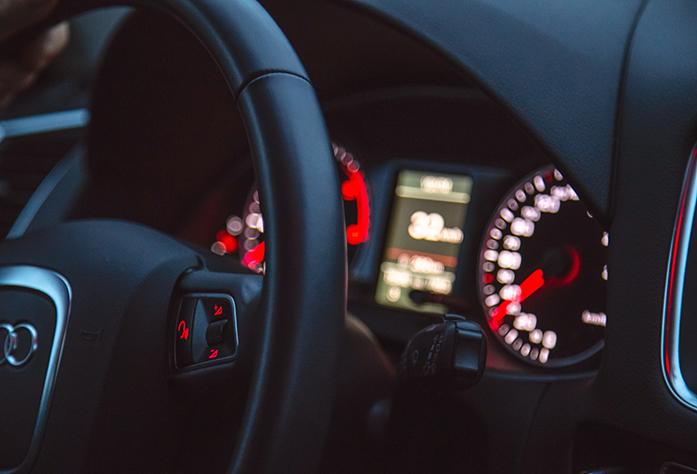By Kasra Zarei
In the current decade, automobiles are evolving beyond their original horseless-carriage functionality. As a platform for technology, automobiles are the target of innovations that can reduce car crashes.
The Iowa National Advanced Driving Simulator has been a center of research, development, and education for automobile technology since 1992.
“Human errors are responsible for 94 percent of car crashes,” said Omar Ahmad, a deputy director of the driving simulator. “Advanced vehicle technologies that help eliminate human errors could help make driving safer for everyone.”
Keeping up with the pace of technology can be extensive, and the simulator seeks to continually improve driving safety through exploring advanced driver assistive technology, automated vehicle research, and other emerging areas in the field.
“We have been doing automated vehicle research for years,” said Daniel McGehee, the director of the driving simulator. “In the past couple years, we have been involved in higher levels of automation, specifically advanced driver assistance systems.”
One of the biggest roles of the program is education. A study recently published by the group demonstrated new methods to expose people to driver-assistance technology that would help them understand and feel less apprehensive about using the systems.
“We administered a survey of questions before and after exposing participants to new vehicle technologies,” McGehee said. “For instance, we asked people how they felt about a car that could brake on its own. Then we put them in a car that could actually do it and afterwards assessed their confidence and interest in the technology.”
The study included five driver-assistance systems. Overall, participants were more confident and less apprehensive about using all five technologies.
The increase in emerging vehicle technologies, such as parallel parking assistance and blind-spot monitor, brings additional efforts needed to educate the public about how to use and study them.
Created by the program, MyCarDoesWhat.org is a public-safety education campaign that provides quick guides, resources, and frequently asked questions about 40 production-level vehicle technologies.
“We have had more than 6 billion media impressions,” McGehee said. “It has been the most successful public-safety campaign around education.”
The education has also benefited graduate students in UI College of Engineering through a course about automated vehicle systems, Automated Vehicle Systems Inc.
“We packaged a lot of our work into a fast-paced course, taught like a start-up company environment, that teaches students how to perform broad-based analyses of the industry and understand just how fast-paced it is,” McGehee said.
Students who took Automated Vehicle Systems Inc., saw and appreciated new ways to look at vehicle technology and understand how rapidly the field is changing.
“Most students like me joined the course due to this curiosity about this fast-moving technology,” said Yang Wu, a UI graduate student in mechanical engineering. “The benefit of the course was we not only developed our in-depth knowledge of company technology, but also learned the major steps in the engineering product development cycle.”
The work of the simulator program extends to areas beyond understanding advanced car technology, including road-safety research.
The program recently received a $1.4 million grant to advance research safety issues prioritized by the U.S. Department of Transportation and continue its pedestrian and cyclist simulation research to reduce collisions among drivers, cyclists, and pedestrians.
LINKS:
https://crashstats.nhtsa.dot.gov/Api/Public/ViewPublication/812115
LINK: https://crashstats.nhtsa.dot.gov/Api/Public/ViewPublication/812115







